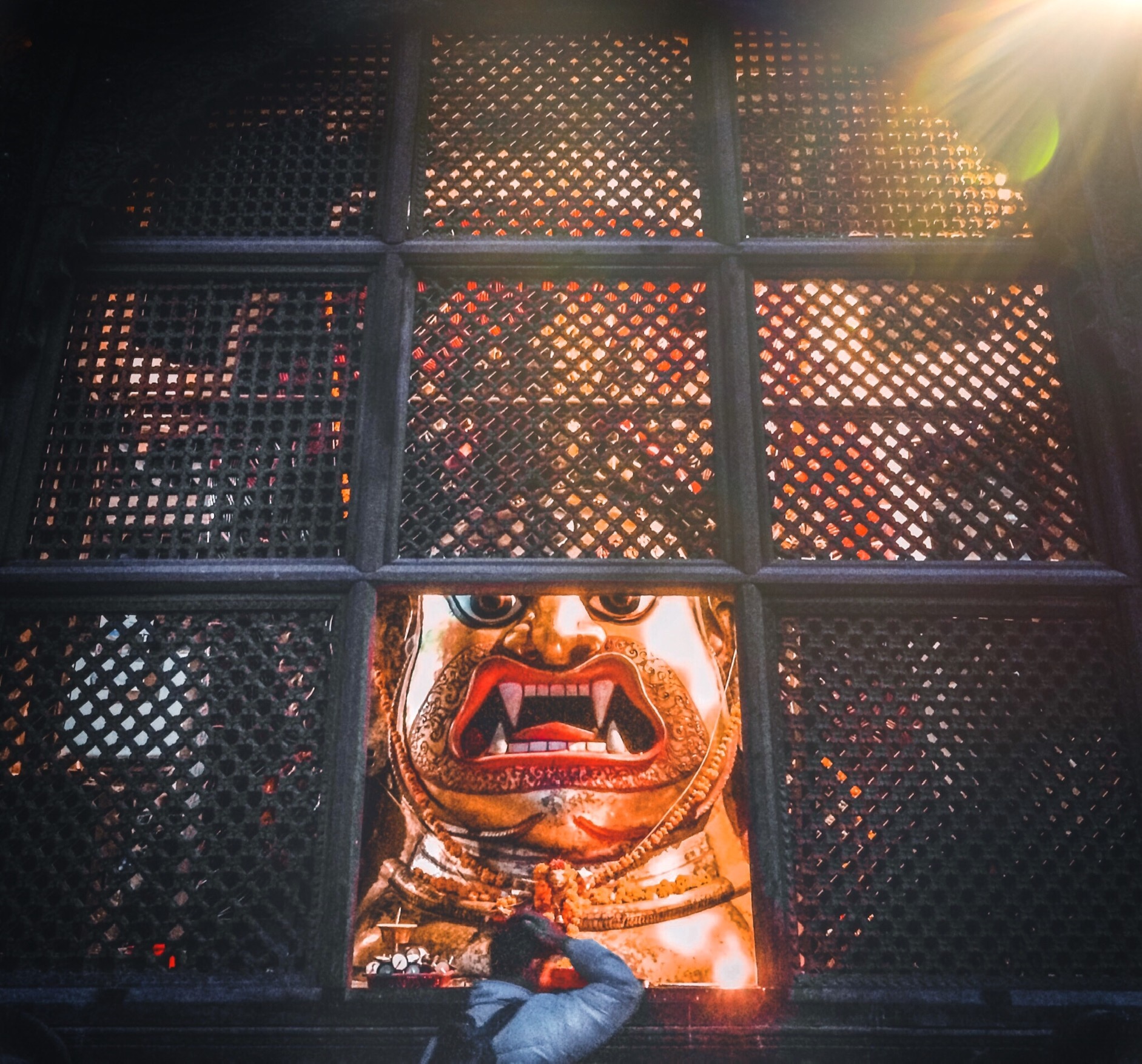Sweta Bhairava on:
[Wikipedia]
[Google]
[Amazon]
Swet Bhairav is a statue of

Bhairava
Bhairava (Sanskrit: भैरव ) or Kala Bhairava is a Shaivite and Vajrayāna deity worshiped by Hindus and Buddhists. In Shaivism, he is a powerful manifestation, or avatar, of Shiva associated with annihilation. In Trika system ''Bhaira ...
, avatar
Avatar (, ; ), is a concept within Hinduism that in Sanskrit literally means "descent". It signifies the material appearance or incarnation of a powerful deity, goddess or spirit on Earth. The relative verb to "alight, to make one's appeara ...
of Shiva
Shiva (; sa, शिव, lit=The Auspicious One, Śiva ), also known as Mahadeva (; ɐɦaːd̪eːʋɐ, or Hara, is one of the principal deities of Hinduism. He is the Supreme Being in Shaivism, one of the major traditions within Hindu ...
located in Hanuman Dhoka
Hanuman Dhoka ( ne, हनुमान ढोका) is a complex of structures with the Royal Palace of the Malla kings and also of the Shah dynasty in the Durbar Square of central Kathmandu, Nepal. It is spread over five acres. The Hanuman ...
, Kathmandu Durbar Square
Kathmandu Durbar Square (''Basantapur Durbar Kshetra'') is located in front of the old royal palace of the former Kathmandu Kingdom and is one of three Durbar (royal palace) Squares in the Kathmandu Valley in Nepal, all of which are UNESC ...
. Swet Bhairav depicts the most dangerous and fierce face of Lord Shiva. The mask of Swet Bhairab is so fierce looking that locals out of fear keep it inside a wooden frame window, and only one frame is opened for the devotees except for a special day: Indra Jatra
Indra Jātrā, also known as Yenyā (Nepal Bhasa: येँयाः), is the biggest religious street festival in Kathmandu, Nepal. The celebrations consist of two events, Indra Jātrā and Kumāri Jātrā. Indra Jātrā is marked by masked danc ...
when all the windows are opened. In the very day of Indra Jatra
Indra Jātrā, also known as Yenyā (Nepal Bhasa: येँयाः), is the biggest religious street festival in Kathmandu, Nepal. The celebrations consist of two events, Indra Jātrā and Kumāri Jātrā. Indra Jātrā is marked by masked danc ...
a wooden/ bamboo straw is placed in the mouth of the statue and rice liquor is siphoned as a ''prasad'' for the devotees. The alcohol if consumed is believed to bring good health and fortune via the blessings of Swet Bhairav.
Inside the wooden latticed screen, below Dega Taleju is hidden the terrifying face of Swet Bhairav. The giant sculpture was fashioned and installed in 1795, during the rule of Rana Bahadur Shah
References
Swet Bhairab (naya.com.np)
External links
* {{Nepal-struct-stub Sculptures of gods Hindu temples in Kathmandu District Nepalese culture Kathmandu Durbar Square Nepalese sculpture